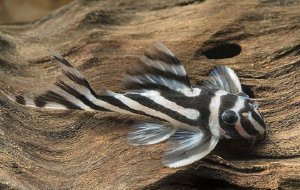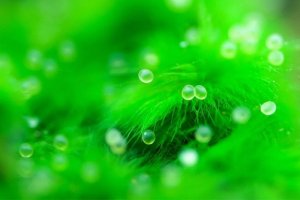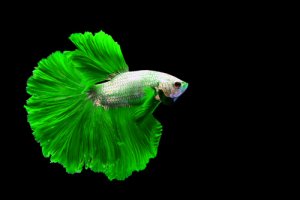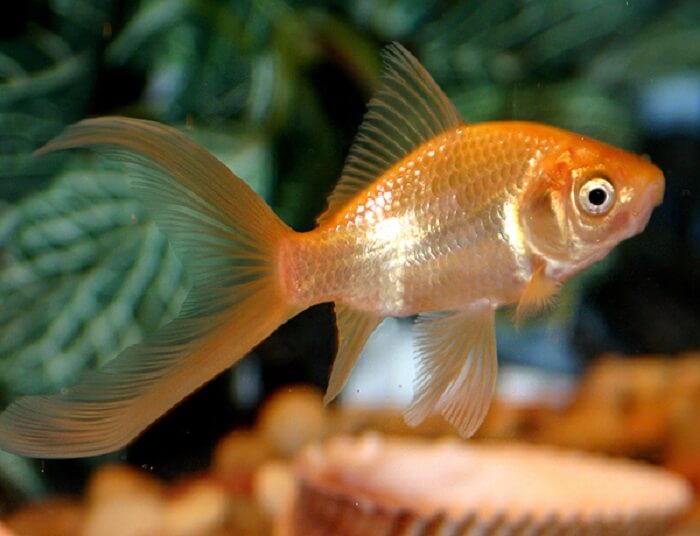
Breed Overview:
| Origin | USA |
| Lifespan | 10 -20 years |
| Size | Comet goldfish size can reach up to 14 inches or 25 cm |
| Colour | Red (most common), red and white (sarasa), orange, yellow |
| Food | Omnivorous |
| Tank Size | 40 gallons (151 liters) minimum plus an additional 20 (76 liters) for extra comets |
| Temperament | Active, spontaneous, curious, exploring |
| Water Type | Freshwater |
| Water Temperature | 65-72 degrees F/18-22 degrees C |
| Water pH | 6-8, but 6.5-7.5 is best |
| Difficulty Level | Beginner |
Species Summary
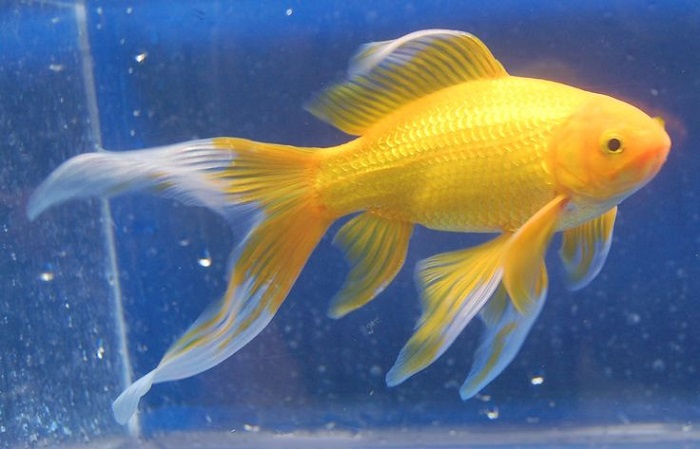
The Comet Goldfish is a delightful, fast-swimming goldfish with a subtle yet striking appearance. It’s ideal for those who want the look of fancy goldfish but are unsure about their more sensitive needs, as like the common goldfish, its body shape is closer to that of wild carp. First bred in the US by Hugo Mulertt, these are attractive and hardy companions, and you can keep them both outdoors in a pond or in an indoor tank.
Comet Goldfish Ideal Tank Setup
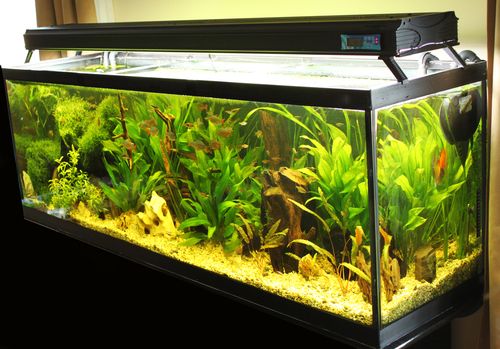
Comet Goldfish Size Myths And Tank Parameters
- Ideal size: At a minimum, a 40-gallon (151 liter) aquarium should be used to accommodate these fish’s need to SWIM.
- Suitable substrates: As hardy goldfish, Comet Goldfish can do well with a variety of substrates such as sand or gravel. However, if you want to keep plants and ensure they don’t get uprooted, a soil substrate underneath such as lava soil will help them take root.
- Filtration Systems: A strong filter is a must here. Canister filters are quiet, and filter at a large rate, at 200+ GpH.
- Ammonia and nitrites: ideally should always be zero
- pH Level: pH 6-8, but avoid it getting to the extreme ends of these parameters
- Water hardness: 5-15 dKh (carbonate hardness) and 3-15 dGh (general hardness)
- Temperature: Comet Goldfish can withstand temperature fluctuations. They do well outside across a variety of US hardiness zones; outside of the arid southwest. Best temperatures for an indoor tank hover around 55-65 F or 13-18 C.
- Lighting: An LED light that is left on for 6-8 hours per day can balance your fish’s circadian rhythm. But did you know it can also help trigger breeding, which proceeds following a drop in light duration which mimics the natural winter period?
- Tank Maintenance: Change a third of the water at once a week if your comet is kept in a tank. You honestly can’t go wrong with doing a larger, once a month change of 50%, too. Use a good quality aquarium vacuum like any of the ones listed here.
Goldfish tend to process food immediately, so they produce a lot of waste. Thus, its important filtration is strong enough to prevent nitrate, nitrite, and ammonia build-up. Unlike slower fancy goldfish, Comet Goldfish can withstand a faster filter in their tank.
Comet Goldfish Tankmates And Habitat
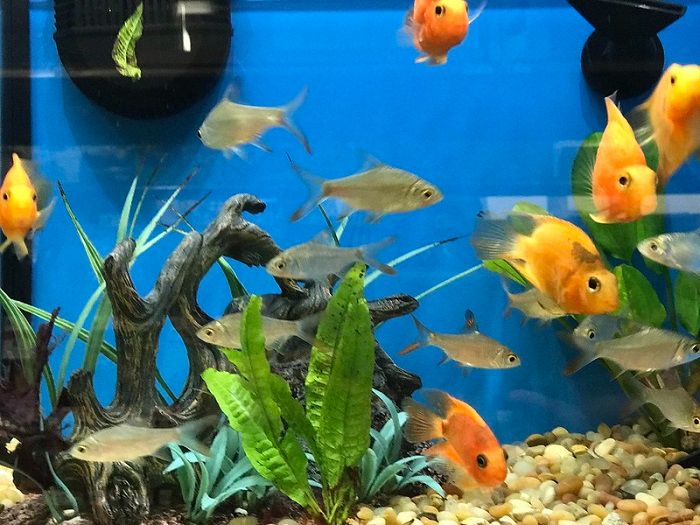
Like all goldfish, Comet Goldfish feed on aquatic plants. Therefore if you want to include these, use fast-growing varieties such as anubias, java fern, or java moss. Adding a soil substrate underneath the substrate you want to be visible (such as gravel) can ensure your plants can take root and your tank still looks aesthetically pleasing.
An Enriched Environment: How To Make Your Comet Thrive
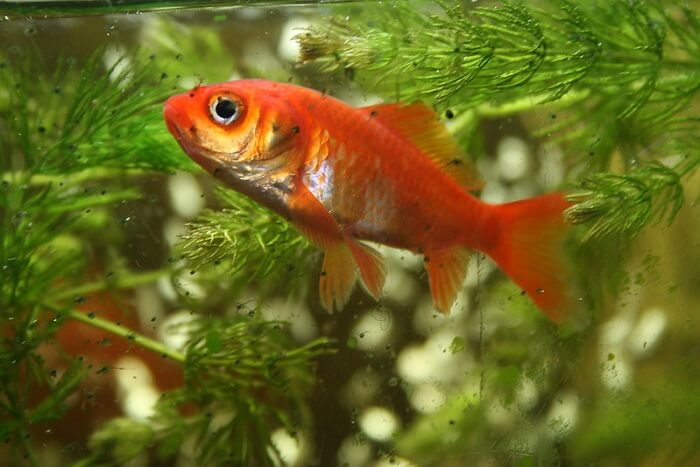
Myths abound about Comet Goldfish due to their commonness and popularity. For example, they also don’t have a 5-second memory! Comet goldfish are highly intelligent. In addition to giving them enough space, they need a varied habitat with lots of plants, real or plastic. They aren’t sensitive to sharp objects like driftwood like some fancy varieties. This is another reason why they are great for kids, who will enjoy decorating the tank.
Best Tankmates For Comet Goldfish
The best tankmate for Comet Goldfish is another comet, or other flat-bodied and single-tailed species of goldfish. These tend to be fast swimming., such as the common goldfish.
Avoid fin-nipping species due to the Comet Goldfish’s long tail. Also avoid goldfish with egg-shaped bodies such as black moors, Ranchu goldfish, and Orandas, as the comet will outcompete them for food. Yet bottom dwelling invertebrates are some of the best tankmates for Comet Goldfish apart from other comets, so long as they are big enough that your comet will not see them as a meal.
Outdoor Ponds For Comet Goldfish
Setting up a goldfish pond is a more intensive project which is not advised for beginners. However, if you are an already experienced aquarist and you want to keep Comet Goldfish outside, a pond minimum depth of 2 feet (0.6 meters) is advised and the same parameters regarding water quality should apply. However, if you are truly serious about keeping these beautiful fish, it can be worth considering a pond.
The benefits of a pond include ample room for fish to grow to their full size. Did you know that comet goldfish size can reach 14 inches (35 cm)?
Selecting Your Comet
The comet’s most striking feature is its v-shaped, flowing tail. Comets differ from common goldfish not only in their v-shaped tail but also in their body size, which makes them even slimmer than the common goldfish. As a result, they have a very delicate appearance which makes their hardy tendencies somewhat surprising. They are available in red, yellow, orange, and Sarasa, or calico. Absent are the nacreous patterns common in the shubunkins. These many colors have been bred by humans into goldfish genetics over the years.
The bright colors of this fish are one of the things that makes it so popular with beginners. If your comet goldfish is losing color, it can be a sign of disease or stress.
Comet Goldfish Feeding
A good pellet-based fish food will ensure your Comet Goldfish gets a nutritional balance. However, you can use other foods to enrich the environment of this smart and active fish.
Protein
Feeding protein mimics the insects and larvae goldfish would eat in their natural habitat. Likewise with comet goldfish, these active fish tend to need more protein to support their fast metabolism. Good sources of protein, fresh or frozen, include:
- Bloodworm
- Tubifex worm
- Brine shrimp
- Daphnia, or water fleas
Frozen vs Fresh Protein?
Some fishkeepers believe that live food can carry parasites and diseases. However, in the case of an active goldfish like the comet, fresh protein provides a vital source of stimulation. If bought from a reputable seller, fresh protein can be a really valuable addition to your fish’s environment. Many specialist aquatics centers source their protein from hatcheries that monitor conditions carefully, preventing disease.
When feeding live food ensure all food is eaten immediately as otherwise the chance of bacterial or parasitic infections increases. It is best to feed in moderation to increase the likelihood your fish will finish all of it. However, goldfish tend to appreciate any protein, so frozen bloodworms or daphnia also go down well.
Pellets And Vegetable Matter
Pellets and vegetable matter enrich the diet of your goldfish and help mimic the natural behavior of their wild ancestors. These would have eaten fallen vegetable matter from the surface of the habitats they lived in. Good vegetables to include are:
- Half a shelled pea
- Sweet potato (small pieces)
- Carrot
- Broccoli
- Cauliflower
- Algae such as duckweed
Behaviour And Temperament Of Comet Goldfish
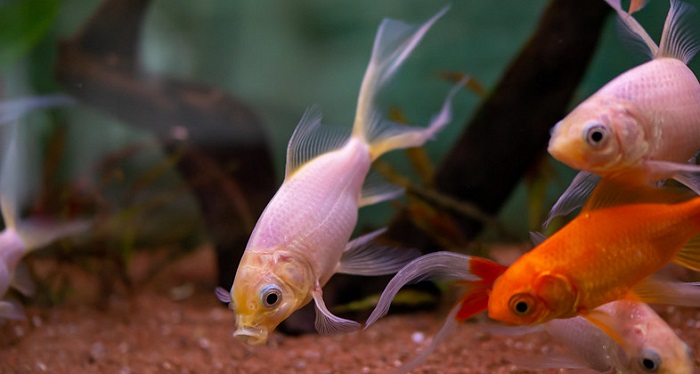
What makes Comet Goldfish different from the related fancy varieties is their speed and agility. Whilst fancy goldfish tend to have egg-shaped bodies and move slowly through the water, Comet Goldfish are very active fish that need to use their energy. You honestly cannot enrich these fish’s environment enough. Comets are agile fish that like to explore their environment; a change in this behavior can be a sign of disease or even that they are about to die.
Without the ability to exercise, your comet will get stressed and unhappy, and this can lead to behaviors such as uprooting the plants in the tank. However, when happy and fulfilled, the Comet Goldfish makes a curious and interactive pet that both children and adults love.
Pests And Diseases
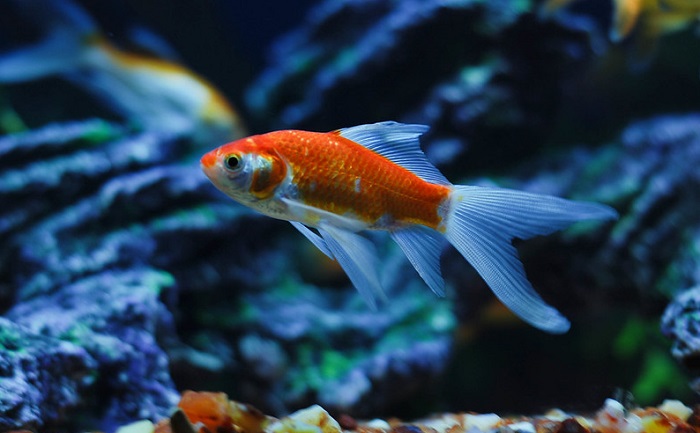
As hardy goldfish, the comet is generally not as susceptible to pests and diseases as fancier varieties. Yet behavior changes can indicate disease or even that your goldfish is nearing death. It’s important to know how to spot signs of disease, as treating them early can often prevent your fish dying.
1. Fin Rot
Causes: Fin rot is a contagious bacterial infection, but your fish will be most susceptible to it if they are kept in poor-quality water. This includes tanks that are too small or don’t have enough filtration.
Solutions: Remove the affected fish and keep it isolated in a separate tank. This prevents the infection from spreading. Treat with an antibacterial treatment and change the water daily, keeping all parameters balanced.
2. Ich/ White Spot Disease
Causes: This is a fungal infection and is one of the most common diseases you may encounter. However, it’s always best not to encounter it at all, so prevention is better than cure. Keep water high quality and ensure regular tank changes. It can be a problem if you are introducing new fish to an already established tank, so always quarantine new fish for 2-3 weeks.
Solutions: there are commercial treatments available for ich that work as antifungals, and like with white spot disease, it’s best to isolate the fish in a separate tank whilst treating this disease.
3. Skin Flukes
Causes: Flukes are a parasite and like ich, they can cause your goldfish to rub up against the sides of the tank. However, to distinguish the conditions you will notice that if your goldfish has skin flukes, the area around the gills will be red or inflamed; there are no white spots, and there may be an excessive amount of mucus on the skin.
Solutions: Acetic acid is often used traditionally to treat flukes. However, there are other commercial fluke treatments available too.
Breeding Your Comet Goldfish
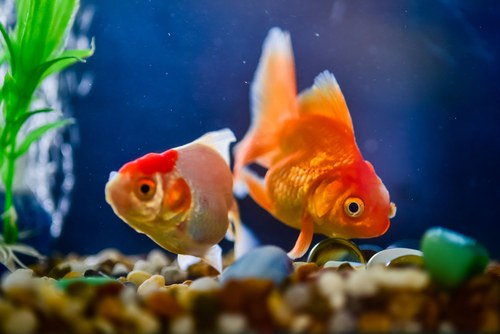
After getting to know the beautiful colors and enigmatic shapes of your comet, you may wish to breed them. Although not a beginner task, you can do this easily so long as you understand their requirements.
Breeding In A Pond Vs A Tank: Things To Note
Tank breeding allows you to create a much more closely controlled environment for your goldfish. It also means you can breed them at any time of year as controlling the tank temperature can induce breeding as it mimics the temperature changes in the fish’s natural habit.
Although these are easy fish to breed, it helps to have an idea of how goldfish mate beforehand. However, if breeding in an outdoor pond, you may need to wait until the spring period when goldfish and their wild ancestors would breed naturally. Either way, during the breeding period you will need to feed more protein because the fish are using more energy, and have a separate tank or enclosure to place the eggs once laid otherwise the parent goldfish will eat them.
A breeding mop is useful in both scenarios. However, it’s especially important if your fish are kept in a pond, as once eggs are stuck to it, it means you can remove them more easily.
Tank Breeding Simple Guide:
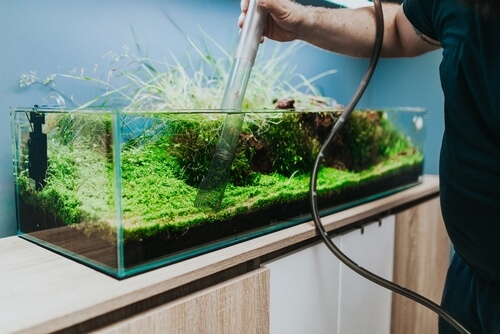
- Reduce the water temperature to 54 F (12 C) and light levels to below eight hours per day. This mimics the winter period to trigger spawning.
- Prepare a separate tank for the eggs.
- Separate the male and female to encourage breeding. You can do this by putting one in the tank in which you intend to keep the eggs.
- Raise the temperature and light levels back to how you would normally have them. So if you kept the tank at 60F before, raise it back to that. This is best done with a tank thermometer.
- Introduce the male and female again. You will see the male chase the female until she drops her eggs, and it is preferable to have a spawning mop so you can easily remove them from the tank. You will also notice tubercles (small white growths) appear on the gills of the male.
- After the fish have spawned, remove the eggs and place them in a separate tank.
Remember – while breeding, keep the tank parameters balanced. All ammonia, nitrates, and nitrites should be kept at zero, and continue feeding a varied diet of both protein, vegetables, and pellets. Consider changing the water twice a week as well.
Final Thoughts
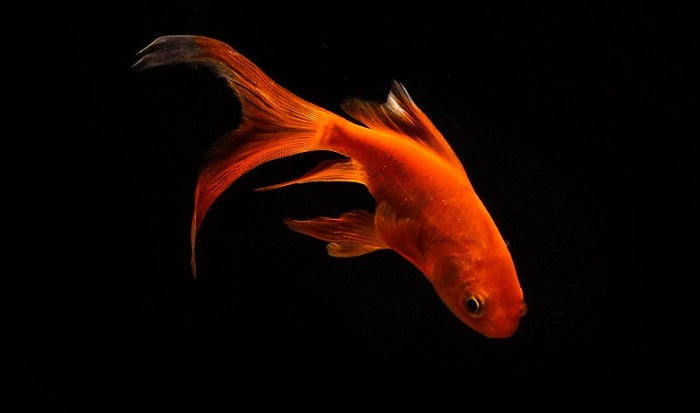
Overall, Comet Goldfish are an extremely popular breed of fish due to their combination of pleasing looks and simple requirements. They are deceptively simple, and to look after them properly requires dedication to understanding their need for activity and exploration! However, it is this same trait which makes them such a rewarding fish to keep for both adults and children.


